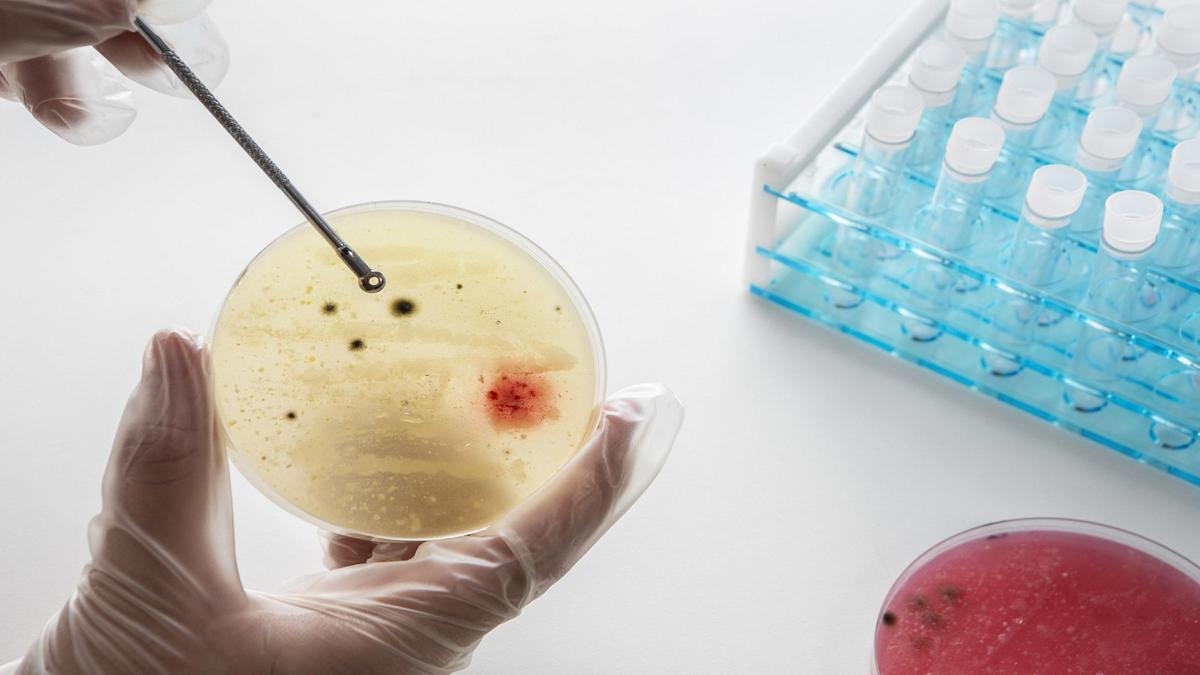Prof. Supreet Saini’s research group at IIT-Bombay uses microbes to understand what makes evolution unpredictable and deterministic at the same time.
| Photo Credit: Special arrangement
In a breakthrough that sheds new light on one of biology’s most puzzling questions, researchers at IIT-Bombay have shown that subtle differences in how nutrients are presented can push microbes along entirely different evolutionary paths.
The findings were published in two papers in npj Systems Biology and Applications and BMC Ecology and Evolution.
The experiments, led by Supreet Saini, focused on the microbes Escherichia coli, a common gut bacterium, and Saccharomyces cerevisiae, a type of yeast widely used in baking.
The researchers designed the study to test whether microbes care about what they eat as well as how it is served. They used the chemically related sugars glucose and galactose but packaged them differently. One group of microbes received a simple mix of the two while others were fed lactose or melibiose, complex sugars made of the same components but bonded differently.
“We picked sugars that are chemically related. Our goal was to see if microbes care about how the meal is served,” Prof. Saini said.
Over 300 generations, the microbes evolved along strikingly different paths. In E. coli, one group grew faster while another produced more biomass. Yeast populations were similarly divergent. Genetic studies revealed that several mutations contributed to these adaptations.
“We didn’t expect these subtle differences to create completely distinct adaptive paths,” Neetika Ahlawat, a postdoctoral scholar and author of both studies, said. “The findings suggest that the way a cell responds to a nutrient can influence which mutations are beneficial and what paths evolution can take.”

When researchers transferred these evolved populations of both E. coli and yeast into new sugar environments, their growth followed a pattern. This phenomenon, called a pleiotropic response, refers to the side effects of adaptation in one environment influencing behaviour in another.
“It’s a nice reminder that evolution is both flexible and constrained,” said Pavithra Venkataraman, a former PhD student at IIT-Bombay and an author of the E. coli study. “In identical environments, the outcome was unpredictable, demonstrating a possible flexibility in evolution. However, the pleiotropic side effects of that evolution in new environments were surprisingly consistent. How well an evolved population performed elsewhere could be predicted based on how its ancestor had behaved.”
The implications stretch far beyond academic interest. By carefully tweaking nutrient combinations, researchers may be able to direct microbial evolution to create strains that grow faster or are more efficient, opening the doors for applications in food and beverages, pharmaceuticals, and biofuels. The study also suggests a strategy to fight antibiotic resistance by restricting the evolutionary pathways available to pathogens.
“We could imagine using resources to limit the evolutionary paths available to pathogens, making it harder for antibiotic resistance to emerge,” Prof. Saini said. “It’s still early days, but the prospect is exciting.”
Like a science fiction story with multiple possible endings, evolution begins from the same starting point but can unfold in endless ways. The IIT-Bombay studies revealed that while the journey may be unpredictable, understanding the hidden rules behind adaptation could allow us to anticipate where evolution may ultimately lead.
Published – August 26, 2025 06:00 am IST
